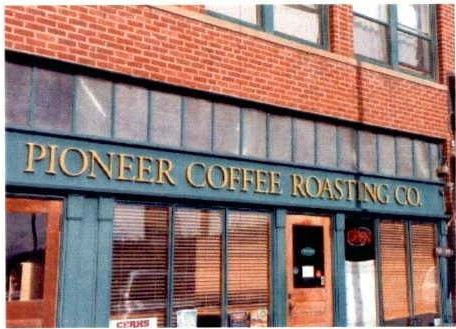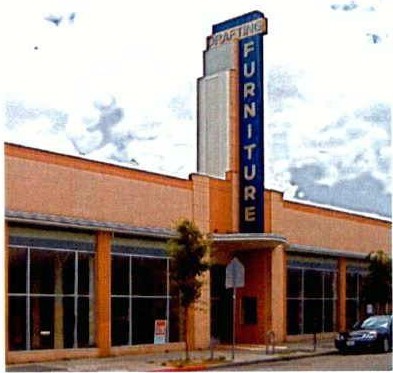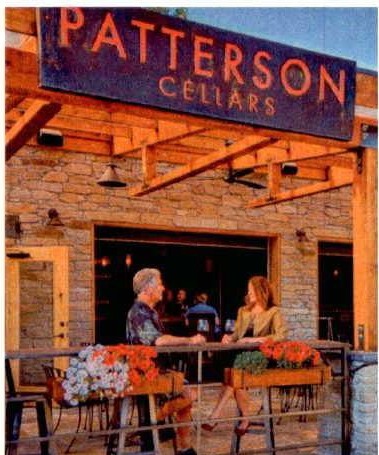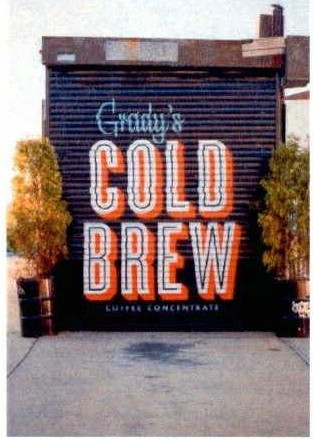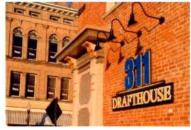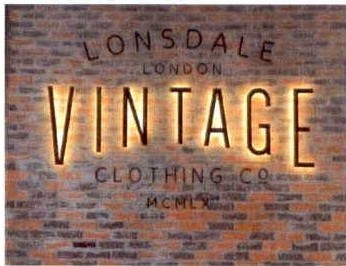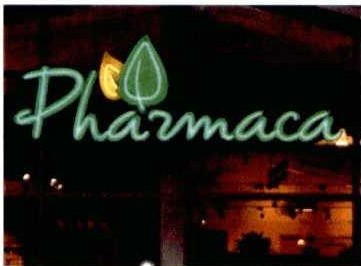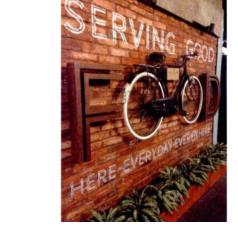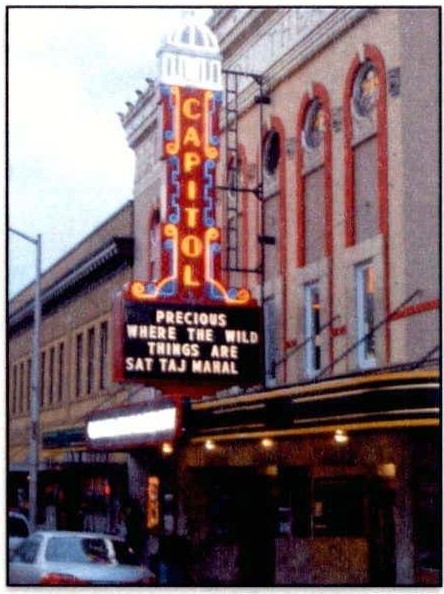Chapter 18.43
SIGNS Revised 11/23
18.43.000 Chapter Contents
Sections:
18.43.010 Purpose.
18.43.020 Applicability.
18.43.030 Permits and Authorization.
18.43.040 Exemptions.
18.43.050 Prohibited Signs.
18.43.060 General Sign Standards.
18.43.070 Permanent Sign Types and Standards.
18.43.080 Commercial Message Temporary Sign Types and Standards. Revised 11/23
18.43.085 Noncommercial Message Temporary Sign Types and Standards.
18.43.090 Sign Zones.
18.43.100 Downtown Sign Zone.
18.43.110 Auto Mall Sign Zone.
18.43.120 Business and Corridor Sign Zone.
18.43.130 Residential Sign Zone.
18.43.140 Master Sign Plans. Revised 11/23
18.43.150 Nonconforming Signs.
18.43.160 Violations.
(Ord. 7184 §2 (Exh. B), 2019).
18.43.010 Purpose
It is the purpose of this Chapter to (1) safeguard the life, health and welfare of the people of the City of Olympia by regulating and controlling the design, quality of materials, construction, location, use, electrification and maintenance of all signs and sign structures, (2) promote the efficient and economical use of signs in distinct areas throughout the City with special focus on the needs of the particular area, and (3) to protect First Amendment free speech rights with content neutral sign regulations.
This chapter shall not regulate building design, official directional signs, traffic signs, copy of signs, signs within Highway 101 or Interstate 5 rights-of-way, window displays, point of purchase advertising displays such as product dispensers and candy machines, national flags, flags of political subdivisions, gravestones, holiday decorations, historical site plaques, towing signs, property management signs (e.g. no parking, no skateboarding) or other signs of a similar nature, as determined by the City.
(Ord. 7288 §32, 2021; Ord. 7184 §2 (Exh. B), 2019).
18.43.020 Applicability
A. No sign shall be erected or maintained in the City except those signs specifically identified in this chapter. The number and size of signs as outlined in this Chapter are maximum standards. Signs may only be established as accessory to a principally permitted use.
B. This chapter is not intended to, and shall not be interpreted to, restrict speech on the basis of its content, viewpoint, or message. This chapter shall not be construed to favor commercial speech over noncommercial speech. A commercial sign may contain a commercial or non-commercial message.
(Ord. 7184 §2 (Exh. B), 2019).
18.43.030 Permits and Authorization
A. Permit Application. A permit or agreement shall be obtained from the City of Olympia for the installation of a new sign or the structural alteration of an existing sign. A Temporary Sign Agreement shall be submitted prior to the installation of a temporary sign.
B. Authorization to Install Signs: For any permanent or temporary sign mounted or installed by inserting anything into the ground, the sign owner is responsible for any damages caused by the sign's installation. The sign owner assumes all liability associated with the sign's placement and installation. The City of Olympia makes no representations regarding suitability of any location. The sign owner shall conduct any and all necessary inspections before installation.
(Ord. 7184 §2 (Exh. B), 2019).
18.43.040 Exemptions
The following signs, and activities relating to signs, are exempt from the requirements of this chapter:
A. Exempt. The following are exempt from the regulations and requirements of this chapter, but may be subject to regulation under other portions of the Olympia Municipal Code:
1. Signs that are not visible from any public right-of-way or another property.
2. Signs inside a building; however, commercial message signs within five feet of a window that is meant to be viewed from the right of way are not exempt and will be treated as window signage.
3. Signs required by local, State, or Federal law if the sign is no more than 32 square feet in area or is painted directly on pavement.
4. Signs installed by a special purpose district or the City, County, State, or Federal governmental agency for the protection of the public health, safety, and general welfare, including, but not limited to, the following:
a. Emergency and warning signs necessary for public safety or civil defense;
b. Traffic and/or wayfinding signs erected and maintained by an authorized public agency;
c. Signs showing the location of public facilities; and
d. Any sign, posting, notice, or similar sign placed by or required by a governmental agency in carrying out its responsibility to protect the public health, safety, and general welfare.
5. Directional signs when internal to the site and not prominently visible from public rights of way.
6. Any sign on a vehicle, unless such vehicle is regularly parked in any prominently visible location from public right-of-way or other public space for the primary purpose of attracting public attention to the sign.
7. Public art, such as murals of a non-commercial nature that do not conform to the definition of “sign”.
8. Posters in display areas incorporated into exterior display cabinets for performing arts or live theater venues when approved through the city's building design review process and used to identify upcoming events.
B. No Permit Required. The following signs do not require a permit when sized and placed in conformance with this chapter:
1. Signs erected by government agencies to implement public policy.
2. Replacing only the face of an existing sign shall not be considered as either a new sign or a structural alteration and does not require a permit.
3. On-premise occupant name plates on residential dwelling units, provided size of name plates does not exceed three (3) square feet in area.
4. Changing of advertising on a legal changeable copy sign (readerboard).
5. Temporary non-commercial signs less than six (6) square feet in sign surface area on private property and installed less than four (4) feet above ground.
6. Normal maintenance of signs that does not change the appearance or size of the sign.
7. Real Estate Signs in conformance with this chapter (see 18.43.080) do not require a permit or Temporary Sign Agreement.
8. Temporary signs for which a Temporary Sign Agreement has been provided to the City.
9. Any signs required to be posted pursuant to the Olympia Municipal Code or any other local, State, or Federal regulation.
10. Any sign on a vehicle, unless such vehicle sign is prohibited pursuant to OMC 18.43.050.
11. Signs placed by the City in City parks or trails, or the Port of Olympia on port owned parks or trails property, in conformance with its standard practices and policies.
(Ord. 7184 §2 (Exh. B), 2019).
18.43.050 Prohibited Signs
Unless otherwise provided for in this chapter, no person shall erect, alter, maintain, or relocate any of the following signs as defined in 18.02.180 in the City and such existing signs must be removed. As provided for in Section 18.43.060.E, the City may allow exceptions to the prohibited signs for historic preservation purposes.
A. Signs without Proper Permit. Signs erected, constructed, or structurally altered that are required to have a permit for such action and that were erected, constructed, or altered without obtaining a permit for such action.
B. Animated Signs. Any animated sign, except traditional barber signs.
C. Inflatable Signs. Any inflatable sign that includes movement or is otherwise an animated sign.
D. Billboard Signs.
E. Roof Signs.
F. Nuisance Signs.
G. Hazardous Signs.
H. Impediment to Access. Any sign that impedes free ingress and egress from any door, window, or exit way required by building and fire codes, or blocks pedestrian access to transit or to/from parked vehicles.
I. Permanent Signs on Vacant Lots. No permanent sign shall be located on a lot, parcel, or easement as the principal use of that lot, parcel, or easement.
J. Certain Portable Signs. Portable signs on wheels (trailer signs) and outdoor electric portable signs.
K. Abandoned Signs.
L. Certain Locations within Right-of-Way (ROW) and Public Property. Signs on or within medians, roundabouts, traffic circles, the clear view sight triangle of intersections, utility poles, lampposts, traffic poles and signals, and street trees in the ROW or on or within other public property or structures such as benches or interpretive/educational signs, except as allowed pursuant to OMC 18.43.070, 18.43.080, and 18.43.085.
M. Certain Parked Vehicles. Signs placed on or painted on a motor vehicle or trailer parked with the primary purpose or outcome of providing signs not otherwise allowed by this chapter.
N. Any sign over four (4) feet high in a required yard setback (See OMC 18.02.180 Definitions of Setback and Yard), unless otherwise permitted by this chapter.
O. Pavement Signs. Other than traffic control signs approved by the City, County, or State, no signage is permitted to be applied to pavement.
P. Commercial messages attached to wireless communication facilities.
(Ord. 7184 §2 (Exh. B), 2019).
18.43.060 General Sign Standards
A. Sign Placement & Standards
1. No sign shall interfere, confuse or conflict with the recognition and visibility of any traffic control or directional devices or street name signs.
2. No signs are permitted in the drive lanes for cars or bicycles (streets), in any median or roundabout or traffic circle, in any parking spaces (designated parking or street shoulders), in any loading or restricted zones, blocking any fire escape, exit or standpipe, or that do not meet accessibility requirements in any pedestrian portions of the right of way (sidewalks).
3. Signs must be placed in compliance with the Clear Sight Triangle standards (see OMC 18.02.180 and Chapter 4 of the Engineering Design and Development Standards).
4. Unless otherwise permitted by this code, no signs other than those placed by the City itself are permitted on City owned property such as, but not limited to, City Hall, City maintenance facility, City parks, etc.
5. All signs shall be kept in good repair and shall be maintained in a safe, neat, clean and attractive condition.
6. Abandoned signs shall be removed, except if the City designates a sign as historic in nature, the City may allow the sign to be exempt from the removal standard for abandoned signs.
7. No sign shall be in or over public rights-of-way with the exception of permitted projecting signs, light projection signs, blade signs, sandwich board or pedestal signs, or those legally mounted on a marquee or awning. This provision does not apply to interpretive signs along trails or non-commercial message temporary sign types and standards as set forth in OMC 18.43.085.
8. No sign, whether temporary or permanent, shall be placed on the roof of any building or structure.
9. No sign shall be located so as to physically obstruct any door or exit from a building or be hazardous to the ingress and egress from buildings, transit stops, or parking areas.
B. Art used as a sign
1. Art that does not contain text or logos is generally not considered to be a sign and is not subject to these sign code regulations unless the art contains a logo, slogan, advertising message, company name, or contact information. Painted wall designs or patterns which do not represent a product, service or registered trademark, and which do not identify the user, are not considered signs.
2. Proposals that do not clearly fit into the category of being solely art or a sign shall be subject to City review, in order to determine if the end result is deemed to be a sign. Criteria used in consideration will include:
a. Size, theme, text with a commercial message, location.
b. Graffiti risk with and without the proposal.
c. Proportion of sign area adjacent to proposed or existing art.
C. Lighting and Electronic signs
1. Electrical Requirements. Electrical requirements for signs shall also be governed by the adopted Electrical Code of the City. Compliance with said code shall be required for every sign utilizing electrical energy as a prerequisite to issuance of a sign permit under this code.
2. Lighting:
a. External light sources shall be shielded and directed onto or toward the sign only.
b. Visible raceways and transformers for individual letters are prohibited, unless painted to match the building exterior upon which it is placed.
c. Signs that have the ability to change colors through either internal or exterior illumination may change no more frequently than once per every twenty-four (24) hours.
3. Electronic Message and Public Service Signs, where allowed:
a. Illumination Limits
i. Signs with an electronic message shall have a brightness level that is comparable with internally illuminated signs.
ii. Signs with an electronic message shall incorporate photocell/light sensors, with automatic dimming technology that appropriately adjusts to ambient light conditions.
b. Hold Time. The digital message or static image shall remain on the display for a minimum of:
i. Public Service Signs at academic schools: Five (5) minutes.
ii. Electronic Development Identification Signs: Three (3) minutes.
c. Transition Method. A transition between messages shall be executed with a minimum fade in and out time of one second.
d. Maintenance: Any permitted electronic sign that malfunctions, fails, or ceases to operate in its usual or normal programmed manner shall be repaired or disconnected within five days by the owner or operator of the sign.
4. Light Projection Signs. Illumination from the projector mechanism shall not pose a hazard for bicyclists, pedestrians, or motorists and shall be screened from view to the maximum extent feasible.
D. Repair and Safety
1. All signs shall be kept in good repair and shall be maintained in a safe, neat, clean and attractive condition.
2. When a City inspector determines the maintenance, control, or safety of a sign is not being sustained, the sign shall be deemed abandoned and it shall be removed.
E. Historical Signs. Historic signs contribute to the architectural and historic character of Olympia and are typically located in the downtown. Historic signs may complement or define an individual building, or they may be valued independently, apart from the buildings or sites to which they are attached. Some historic signs identify the current business, while others are considered legacy signage, or signage related to a structure but not to the present occupancy or use. All signage applying for approval will be reviewed for compliance with the following standards.
1. Historic signs, as a distinctive feature of Olympia, should be identified, retained, and where appropriate, restored.
2. New signs or alterations to existing signs on individually designated historic buildings and buildings in designated historic districts shall be designed and installed following the U.S. Secretary of the Interior's Standards for Rehabilitation.
3. New signs added to individually designated historic buildings and buildings in designated historic districts shall preserve, complement, or enhance the architectural composition and features of the building and/or district.
a. Placement, Proportion, and Shape. Provide adequate signage for businesses while maintaining the building's architectural integrity, by locating signs so that building details shall not be covered or obscured.
i. Signage shall be installed in appropriate “sign areas” as defined by the existing architecture of the facade.
ii. Signage shall be mounted to fit within existing horizontal and vertical divisions and architectural features to the extent feasible. Where no architectural divisions exist or are evident, signage will be proportionately scaled to the façade and placed to respect window and door openings.
iii. No sign shall be placed or located so as to obscure or cover historic features of a building.
iv. Damage to architectural detail when attaching the sign shall be avoided. Sign attachment parts shall be reused in their original location (holes in the façade or fixing positions) to protect the original building materials to the greatest extent feasible.
v. The shape of the sign should be used to reinforce the relationship of moldings, transoms, and other design elements seen along the street.
b. Material. Sign materials shall be compatible with the historic materials and character of the building and the applicable Sign Zone.
c. Illumination. Signs may be illuminated or non-illuminated. Illuminated signage shall use lighting forms that are consistent in appearance with the historic character of the building and applicable Sign Zone and Character District.
F. Legacy Signs. Includes existing signage, portions of which may or may not be visible, but can be documented by historical photographs, and may also include accurately reconstructed or entirely repainted signs based upon such documentation, provided that such signage is not representative of the current occupancy. Legacy signage may be painted or constructed, as in a blade, pylon, or rooftop sign, although does not provide for reconstruction of billboard signs. Painted wall graphics, including accurately replicated/repainted wall graphics related to on or off-site content, are treated as Legacy Signage provided they exactly duplicate an earlier sign on the subject property.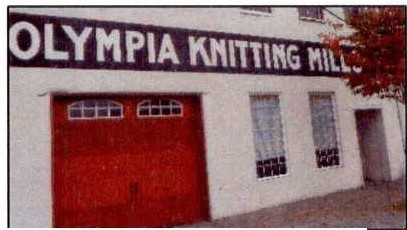
1. Upon approval by the City, Legacy Signage related to a previous on- or off-site use of the property may remain in place and be excluded from any sign area or quantity calculations. For example, the area of a painted wall graphic will not be included in a square foot allotment based upon building linear frontage.
2. Documented wall graphics formerly associated with the specific site may be repainted and excluded from area calculations as Legacy Signage, provided:
a. Such signs are identically and accurately re-created as they existed historically at the subject tax lot, building or site; and
b. Such signs can be documented physically or photographically with sufficient clarity to determine original content; and
c. The accurate replication of such signage will contribute to the character of the area.
3. Previously existing graphics or signs modified in any manner from their historically documented character are not considered legacy signs under this subsection and are subject to sign standards of the Olympia Municipal Code.
4. If firm evidence can be provided of the past existence of a sign which would be nonconforming under current regulations, the City may allow the placement of a replica of the sign, if support in the form of a recommendation of approval from both the Design Review Board (DRB) and Heritage Review Committee (HRC) of the Heritage Commission is granted and it meets current building code standards. In making its recommendations, the DRB and HRC must consider any historic district designation, the intent of the design review standards in place for the proposed location, and consistency with the intent of the underlying zoning district and the future land use designation of the Comprehensive Plan.
(Ord. 7184 §2 (Exh. B), 2019).
18.43.070 Permanent Sign Types and Standards
The sign types below are permitted when allowed in the sign zone in which it is proposed and when the standards for the sign type are met:
A. Alley. Up to one (1) square foot per one linear foot of the wall on which the sign is mounted, for the portion of the alley wall occupied by the business or use. Sign must be flush mounted to or painted on the alley wall so that minimum alley widths are maintained for trash collection and utility/delivery purposes. Uses with a public entrance from the alley may also provide a building entrance sign at the entrance, provided that vehicular use of the alley is not compromised by the sign.
B. Awning. Only the area containing the sign band may be internally lit. All awnings which are illuminated must meet the state energy code requirements.
C. Blade. Clearance from grade - minimum eight (8) feet if located in an area where pedestrians can pass beneath the sign.
D. Building Entrance signs:
1. Permitted Content: business name only.
2. Sign Types: flush mounted wall sign, painted, window, or blade signs only.
3. Use limits: not permitted on uses in residences, such as preschools and home occupations, which are allowed one identification sign only.
4. Number: one (1) per exterior public entry.
5. Placement: within five (5) feet of public entrance.
6. Maximum Size: ten (10) square feet.
E. Business Directory
1. The allocation of space for tenants is determined by the property owner and tenants. Not every tenant is guaranteed space on the business directory sign.
2. A business directory may be either combined with that portion of the development identification sign which identifies the name of the development or it may be a separate sign, provided that the combined amount of signage identifying the name of the development and the business directory sign does not exceed the total allowable sign surface area for Development Identification Signs.
3. Building location maps shall be considered as a type of business directory and are subject to the above standards.
F. Business Identification Signs can be freestanding or building mounted, depending on the sign zone the business is located in. Such signs are limited in number based on the number of property lines that abut a street frontage, however for the purposes of the sign code the City may interpret a private street or internal access road as being a second street frontage when calculating the total amount of signage allowed. In cases where tenant spaces are located on the end of a building, signs are allowed on the front and side walls.
G. Development Identification Signs are those which serve as the primary identifier of the name of a development. Business directories are considered a part of a use’s Development Identification Signs.
1. Multiple occupancy buildings
a. Sign identifying name of building – one (1) per exterior public entry.
b. Business directory for the building – one (1) per exterior public entry.
2. Multiple building complexes.
a. Sign identifying name of development – one (1) per driveway entry to the development, to be located at the driveway entry.
b. Business directory for the development – one (1) per driveway entry to the development.
H. Electronic Development Identification Signs, where permitted:
a. Maximum height: up to twenty-five (25) feet.
b. Maximum sign area: up to three hundred (300) square feet of copy area per side.
I. Directional Signs are designed solely to guide or direct pedestrian, bicycle, or vehicular traffic to an area or place. Informational signs are those of a public or quasi-public nature.
1. Off-premises commercial directional signs are prohibited, with the exception that an off premises commercial directional sign permit may be granted, if all of the following can be found to apply:
a. The use caters to tourists through on premise provision of food, lodging or recreation.
b. The use is located at least one (1) block from a major arterial (as designated by the
City).
c. Such signs shall be directional in nature only (that is, no advertising other than name and location is allowed).
d. No more than two (2) such signs for each use shall be approved.
e. Sign Structure - freestanding or building mounted.
f. Maximum Size – sixteen (16) square feet (eight (8) square feet per side for double sided signs).
g. Such a sign shall meet all other applicable provisions of these standards.
2. Directional and informational signs of a public or quasi-public nature.
a. May be erected or maintained by an official or civic body.
b. Sign Structure - freestanding or building mounted.
c. Maximum Size – sixteen (16) square feet (eight (8) square feet per side for double sided signs).
J. Entrance/Exit
1. Content: no commercial message is permitted.
2. Sign Structure: freestanding or building mounted.
3. Maximum size: five (5) square feet (2.5 square feet per side for double sided signs); Maximum Height: four (4) feet; Maximum Width: four (4) feet.
4. Number of signs: one (1) per driveway, placed within five (5) feet of the driveway unless otherwise approved due to site layout and constraints. If the sign is placed on a building wall it shall not project more than twelve (12) inches away from the wall to which the sign is attached nor extend beyond such wall, or above the roof line.
K. Freestanding
1. If the sign is double sided, each side may have half of the maximum square footage.
2. the front yard setback shall be a minimum of five (5) feet if abutting a principal arterial (major arterial) with a rights-of-way of eighty (80) feet or less, provided that the sign owner agrees to assume all expenses of relocating the sign when and if the City acquires additional rights-of-way. The sign owner must provide the City with an appropriate legal document binding the owner and any future heirs or assigns to said agreement.
3. Height - 4 foot maximum.
a. Exceptions: In association with secondary and above academic schools, if the site is greater than five acres and more than fifty (50) percent of the building square footage is a Type "E" occupancy per the adopted Building Code or within the Freeway Corridor Overlay district:
1. Uses on City street frontages – sixteen (16) feet.
2. Uses adjacent to the freeway – twenty-five (25) feet.
3. A maximum of one (1) pole sign is permitted per use, however, only one pole sign in a development is permitted.
4. Placement of pole signs - pole signs shall be placed in a planter box, or otherwise landscaped, with the area of the landscaping a minimum of onehalf (1/2) of the surface area of the sign.
b. Exception: Maximum height for business directories which are separate signs from the development identification sign is seven (7) feet, if the site is at least forty (40) acres in size and for new development the sign is located a distance from the public right-of-way which is equal to the required throat length of the driveway, per the City Public Works Standards, or for existing development is equal to the existing throat length or one hundred (100) feet, whichever is greater.
4. Placement - freestanding signs located entirely on the premises of the use they are associated with, unless otherwise specified.
L. Marquee.
1. Marquee signs are exempt from the aggregate sign surface area requirements.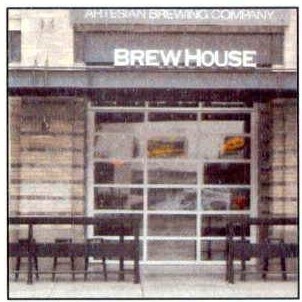
2. The vertical measurement of the sign shall not exceed twelve (12) inches.
3. No portion of the sign may project out beyond the ends of the marquee.
4. Clearance from grade - minimum eight (8) feet if sign is located under the marquee.
5. Placement - can be under, on top of, or on any face of the marquee. If on top of the marquee, the sign shall be parallel to the plane of the wall it is attached to.
6. Projection from face of building - if attached to the face of the marquee, the sign shall not project more than twelve (12) inches away from the face of the marquee.
7. Theaters - existing movie theaters are allowed to retain their traditional type of marquee sign without animated or flashing lighting.
M. Painted. If a change is made to the original appearance of a painted wall sign, this shall constitute a new sign and require a permit.
N. Pole Signs.
1. Sign Structure - Pole signs are permitted in Freeway Corridor design review district and the Auto Mall Sign Zone.
2. Use limits - if property is adjacent to freeway, pole signs are limited to multifamily complexes, shopping centers, and industrial complexes.
3. For the purposes of calculating the number of permitted signs, pole signs are subject to the standards for freestanding signs, i.e., they are not in addition to the number of permitted freestanding signs but are considered one of the permitted freestanding signs.
4. All other sign standards in Freeway Corridor district are determined by the underlying zoning district.
O. Projecting.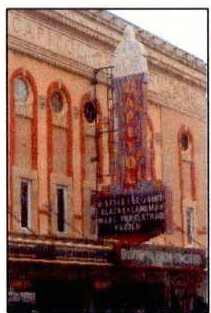
1. Limit of one (1) per single occupant building (not in a shopping center).
2. Maximum size is fifty (50) square feet (twenty-five (25) square feet per side).
3. Clearance from grade - minimum of ten (10) feet, except when sign is mounted under a marquee the minimum clearance from grade is eight (8) feet.
4. Projection from face of building shall not exceed three (3) feet.
P. Public Service signs, such as time and temperature signs and community bulletin boards, are allowed to be incorporated into a use’s permitted signage, provided the overall sign size, height and other standards for the underlying zoning district are met. Public service signs for academic schools shall hold the message or image static for a minimum of five minutes and the electronic portion of the sign shall be turned off between 9:00 p.m. and 6:00 a.m.
Q. Shopping Center Sign. Allowed for shopping complexes on sites of five (5) acres or larger, as follows:
1. Number: Limit of one per public entrance from an arterial or major commercial collector street to the site.
2. Height: Maximum height of twenty (20) feet.
3. Advertising Area: Maximum copy area of one hundred (100) square feet per side. Copy area shall include the name of the shopping complex, if included on the sign.
4. Location: Setback a minimum of five (5) feet from property lines, placed in a landscaped area, and located outside of any clear view sight triangles (EDDS, Chapter 4).
5. No portion of the sign may contain an electronic/digital message.
6. In no case shall the presence of a shopping center sign, when in proximity of landscaping or street trees, be sufficient justification to excessively prune (“top”) or remove trees that obstruct visibility of the sign.
7. Design Elements. The following design standards shall be achieved:
a. The sign shall have a solid base or at least two connections to the ground.
b. The sign shall incorporate a top band, cap, or design element above the copy area.
c. Lighting, colors, and materials are consistent and compatible with the shopping complex colors and materials.
R. Window Signs. See 18.43.080.
S. Wall Signs. Projection from face of building - shall not exceed twelve (12) inches away from the wall which the sign is attached to nor extend beyond such wall, or above the roof line. Such signs shall comply and count toward the aggregate signage allowance. For wall signs placed in an alley, the maximum distance from the wall may be required to be less than twelve (12) inches to ensure adequate clearances for vehicles is maintained.
(Ord. 7288 §33, 2021; Ord. 7184 §2 (Exh. B), 2019).
18.43.080 Commercial Message Temporary Sign Types and Standards Revised 11/23
The sign types below are permitted when allowed in the sign zone in which it is proposed and when the standards for the sign type are met, including the general provisions at the end of this section and submittal of a Temporary Sign Agreement:
A. Banners. Banners in the Downtown, Auto Mall, Business & Corridor Sign Zones and on approved nonresidential uses and multifamily complexes in the Residential Sign Zone shall be limited to the following:
1. Quantity.
a. One temporary banner sign is allowed per tenant space on the property.
b. The property owner (or landlord), if not also a tenant, may be allowed one temporary banner sign.
2. Size. Up to thirty-two (32) square feet, however for buildings or tenant spaces with an exterior wall width greater than thirty-two (32) feet in width, the maximum size of a banner shall be up to one (1) square foot of banner area for every one linear foot of exterior wall space per tenant/business space, up to a maximum size of one hundred (100) square feet.
3. Placement. The entire banner shall be attached flush to the façade of the building, anchored at all four corners, and may not extend above the roofline or around the corner of a wall.
B. Sandwich Board/Pedestal Signs. Where permitted, the following standards shall apply:
1. Quantity. One temporary sandwich board or pedestal sign is allowed per tenant space on the property.
2. Size. The sign shall be no more than eight square feet in size and no greater than four feet in height.
3. Placement. Sandwich board/pedestal signs shall be placed in conformance with OMC Section 9.16.180 and:
a. Not create a traffic safety hazard by interfering with the vision of drivers entering or leaving the premises.
b. Be located in such a manner so as not to interfere with the opening of car doors, use of bicycle parking facilities, bus stops, loading zones, or pedestrian traffic.
c. Be located such that an unobstructed passageway of forty-eight (48) inches shall be maintained for accessible travel routes for all on all public and private rights-of-way and walkways.
d. Be placed directly in front of or adjacent to the sponsoring business and on the walkway directly in front on the business. It shall be no farther than twenty (20) feet from the public entrance to the business, unless an alternate location is approved by the city (for example, if one building is setback farther from the sidewalk than the adjacent buildings).
e. Signs shall be placed entirely on private property and outside of the right of way unless the owner(s) of such sign assume liability for damage resulting from their use by providing the City with an agreement signed under penalty of perjury (as provided by the City) holding the City harmless from such resulting loss.
4. Duration. Sandwich board/pedestal signs may be placed outside during business hours, three hundred sixty-five (365) days a year.
C. Construction Signs. Where permitted, the following standards shall apply:
1. The maximum area of a construction sign in any zone shall be thirty-two (32) square feet. No sign permit is required for the posting of construction signs on the site where the construction is taking place.
2. All construction signs shall be removed from the premises within ten (10) days of the cessation of excavation, construction, demolition, rehabilitation, structural alteration or related work on site.
D. Feather Signs. Where permitted, the following standards shall apply:
1. Maximum height including pole: Eight (8) feet.
2. Maximum height of flag portion of sign: Five (5) feet.
3. Maximum width of flag portion of sign: Two (2) feet.
4. Maximum area of feather flag: Ten (10) square feet.
5. Maximum number of feather signs allowed per parcel: Five (5).
6. The feather sign shall be mounted entirely on private property and may not be mounted at a location where the flag will enter any sidewalk, street, or driveway when fully extended horizontally.
E. Inflatables. Where permitted, the following standards shall apply:
1. Maximum number of inflatable sign events per property on display at one time: One (1).
2. Minimum amount of time between inflatable sign installations: Fourteen (14) days.
3. Maximum height: Twenty (20) feet from the ground.
4. The inflatable must be secured in a manner that meets all code requirements for safety (including placement of any guy wires, etc.).
5. Inflatables may not include movement, as those are considered animated signs which are prohibited.
F. Light Projection. Where permitted, the following standards shall apply:
1. Maximum number of projection signs per property on display at one time: One (1).
2. Maximum area of projection display: Twenty (20) square feet.
3. The area of display shall project only upon the property occupied by the associated use or the sidewalk portion of the public right-of-way within ten (10) feet of the public building entrance occupied by the use.
4. Permitted only during business hours.
5. The image projected must remain static and shall not contain animation or movement, nor shall the image change at a rate greater than once every twenty-four (24) hours.
6. Light Projection signs are only permitted in the Entertainment and Art/Tech Downtown Design Sub-Districts of the Downtown Sign Zone and in the Auto Mall Sign Zone.
G. Yard/Lawn Signs. Where permitted, the following standards shall apply:
1. Maximum sign surface area: Ten (10) square feet.
2. Maximum sign surface area height: Three (3) feet.
3. Maximum width: Four (4) feet.
4. Maximum posted height above grade: Four (4) feet.
5. Placement: All signs must meet the minimum clear view triangle standards at driveways and intersections (see Chapter 4, Engineering Design and Development Standards).
H. Window Signs. Where permitted, the following standards shall apply:
1. Window signs can be of a temporary nature (e.g. a poster in a window) or of a more permanent nature (e.g. professional lettering adhered to the window; opaque or semitransparent film with or without graphics or text). All of these sign types can be removed and replaced. Window signs with commercial or noncommercial messages are permitted in the Downtown, Auto Mall, and Business and Corridor Sign Zones. Window signs of a noncommercial nature are permitted in the Residential Sign Zone.
2. A waiver may be granted by the Community Development Director or the Community Development Director’s designee for the protection of sensitive personal data (e.g. identity and financial information of bank patrons) or when supported by the Olympia Police Department as an effort to reduce crime or otherwise protect the general health, safety, and welfare of the public.
3. Window signs shall not be animated (flashing, scrolling, or contain movement).
4. For properties for which a traditional building mounted sign is not practical because of window number, size, and placement or for which traditional signage would cover architectural features, the city may allow window signage coverage to be increased up to the size of building mounted signage that would be allowed.
I. Real Estate Signs. Where permitted, the following standards apply:
1. Permits and Temporary Sign Agreements - not required (see OMC 18.43.040).
2. Materials - all exterior real estate signs must be of wood or plastic or other durable material.
3. Placement - signs may not be attached to a utility pole or traffic safety device or interfere with traffic safety.
4. Real Estate signs may not be specifically illuminated, either internally or externally.
5. Residential properties:
a. For Sale and Sold signs
• Maximum size – 10 square feet, provided that if a single faced sign, sign may not exceed 5 square feet.
• Height – seven feet maximum.
• Placement - signs must be placed wholly on the property for sale. If sign is greater than five square feet in sign surface area, it must be placed more than 30 feet from the abutting owner’s property line.
b. Directional Open House Signs
• Maximum size - 10 square feet, provided that if a single faced sign, sign may not exceed five square feet.
• Height – four foot maximum.
• Placement - signs may be placed no less than 10 feet from the traveled portion of public rights-of-way, provided it does not interfere with traffic safety.
• Hours - permitted only during daylight hours and when the broker, agent, or seller is in attendance at the property for sale.
• Number of signs - one sign per street frontage on the premises for sale and three off-premise signs. However, if a broker/agent has more than one house open for inspection in a single development of subdivision, the broker/agent is limited to four off-premises open house signs in the entire development or subdivision.
6. Commercial and Industrial Properties:
a. For Sale, Rent, or Lease Signs
• Maximum size – 50 square feet, provided that if a single faced sign, sign may not exceed 32 square feet.
• Height – eight foot maximum.
• Placement - for all commercial and industrial properties, if the sign is freestanding, it must be located more than 15 feet from public rights-of-way and from any abutting property line if the adjacent property is developed. These signs can be single or double sided and can be angled to maximize readability to motorists (in the shape of a “v”) as long at the sign meets this setback criteria. For developed commercial and industrial properties, if the face of the building is less than 15 feet from the property line, the sign must be placed on the building or in a window.
• Removal - signs may be displayed only while the property is actually for rent or sale.
• Number of signs - one sign per street frontage while the property or building is actually for sale, rent, or lease.
7. Additional Real Estate Signs - The Director may grant a Type I permit to allow temporary off-premises signs in addition to those permitted above. Such additional signs may be used to advertise open houses, to provide directions to new developments, or for similar purposes. Such signs may be placed no fewer than 10 feet from the traveled portion of the public right-of-way, provided they do not interfere with traffic safety, but they may not be attached to utility poles or traffic safety devices. The Director shall determine the number and locations of such signs, and the period during which they may be displayed. The Director shall take into account the number of existing signs in any proposed location, and shall limit or prohibit new ones so as to prevent a traffic hazard or a detrimental effect on neighboring property.
General Regulations
J. The following provisions apply to all commercial message temporary signs placed within the City:
1. Temporary Sign Agreement Required. Prior to installing a temporary sign, a Temporary Sign Agreement shall be submitted to the City acknowledging the applicable standards. This applies to all temporary signs except Real Estate Signs and Noncommercial Speech Signs.
2. Sign Placement. All temporary signs must be placed wholly within the site/property pursuant to the requirements of this chapter, except when allowed to extend into or be placed in the right-of-way by this chapter. See OMC 18.43.060.
3. Materials – Construction. Temporary signs may be made of any durable material provided that the temporary sign otherwise conforms to the requirements of this chapter.
4. Lighting. Temporary signs shall not be internally illuminated.
5. Audio. Temporary signs shall not emit noise.
6. Movement. With the exception of feather signs where allowed, temporary signs shall not move or vibrate.
7. Public Spaces. Temporary signs shall not be placed in any public park, trail, open space, or other public space, except for those signs placed by the City or a special purpose district that owns the property.
8. Residential Uses. Residential uses on mixed-use properties or in a commercial sign zone shall be subject to the temporary sign regulations of the residential sign zone.
9. Commercial Uses. Commercial uses in a residential sign zone shall be subject to the temporary sign regulations of the residential sign zone.
10. Temporary signs on commercial properties may be commercial or noncommercial in their message.
11. Changing image sign features and electronic elements are prohibited.
12. Any temporary sign that is specific to an event shall be removed within five (5) days of the end of the event.
K. The following provisions apply to temporary signs with a commercial message placed within the City:
1. Duration. The maximum length of time is sixty (60) days. Window signs and sandwich board/pedestal signs are exempt from the duration provisions.
2. Frequency. No more than four (4) temporary signs shall be installed at any one use during any twelve (12) month period; except for motor vehicle sales uses within the Auto Services District, temporary sign permits shall be limited only by a requirement for fourteen (14) days of separation between temporary sign events.
3. Number. No more than one (1) such sign shall be allowed at any one time for a use, except for motor vehicle sales uses within the Auto Services District no limit is imposed. For the purposes of calculating the number of temporary signs allowed for a business, a sandwich board/ pedestal sign and window signs shall not be counted when a Temporary Sign Agreement has been filed and the signs are placed in accordance with the standards in this code.
(Ord. 7364 §31, 2023; Ord. 7288 §34, 2021; Ord. 7187 §3, 2019; Ord. 7184 §2 (Exh. B), 2019).
18.43.085 Noncommercial Message Temporary Sign Types and Standards
Noncommercial speech signs express noncommercial messages such as public/ community events, religious, political, ideological, or other philosophical messages. Noncommercial speech signs do not promote commercial businesses, projects or services. The content of such signs is not regulated but the sign is subject to 18.43.060, any placement standards for the sign type in Section 18.43.080, and the following requirements:
A. On private property in Downtown, Auto Mall, and Business & Corridor Sign Zones:
1. The sign area of all noncommercial speech signs on a lot shall not exceed thirty-two (32) square feet.
2. Freestanding: Maximum height from grade to top of sign: four (4) feet within five feet of property lines; ten (10) feet if more than five feet from all property lines.
3. Building Mounted: Shall not extend above the roof line.
4. Number: Limit of one per street frontage.
B. On private property in Residential Sign Zone:
1. Residential Uses:
a. The sign area of noncommercial speech signs shall not exceed ten (10) square feet.
b. Maximum height from grade to top of sign is four (4) feet.
c. Minimum setback from property lines: Five (5) feet.
d. Number: No limit.
2. Approved Nonresidential and Multifamily Complexes:
a. The sign area of noncommercial speech signs shall not exceed twenty-four (24) square feet.
b. Maximum height from grade to top of sign is four (4) feet.
c. Minimum setback from property lines: Five (5) feet.
d. Number: Limit of one per street frontage.
C. All noncommercial speech signs when in the public right of way:
1. Size/Area: The sign surface area shall be no larger than six square feet;
2. Height: The sign height, when posted, shall be no more than four (4) feet above grade (height of thirty inches (30") or less is required in clear sight triangle, see Chapter 4, EDDS);
3. Number: No more than three (3) temporary signs are allowed per street frontage adjacent to any one parcel, including all other temporary signage that may be allowed under this chapter;
4. The sign must be placed entirely outside of the roadway and meet the clear sight triangle requirements for driveway and street intersections contained in Chapter 4 of the Engineering Design and Development Standards (see 4B.150, EDDS). Where no curb exists, the sign must be placed outside the roadway at least ten (10) feet from the edge of the roadway;
5. The sign must not obstruct pedestrian or accessible routes to or along the sidewalk or encroach into the minimum clear pathway area of forty-eight (48) inches in width; and
6. The sign must remain portable and may not be attached or anchored in any way to trees or to public property including, but not limited to, utility or light poles, parking meters, or pavement.
7. Only Yard/Lawn signs are allowed when placed in the public right of way.
(Ord. 7184 §2 (Exh. B), 2019).
18.43.090 Sign Zones
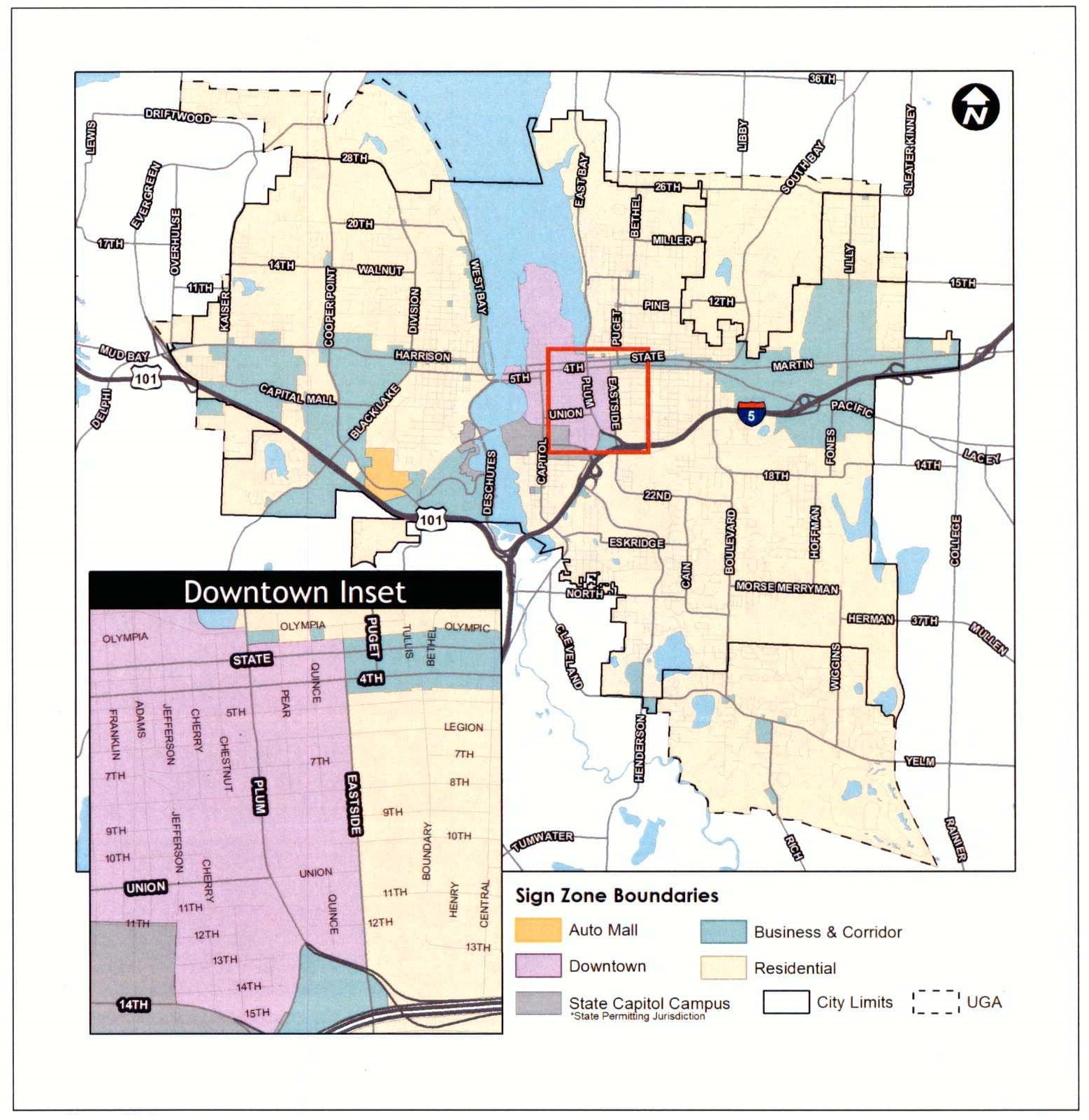
Figure 43-1
The following sign types are allowed in the four sign zones, subject to the standards of the applicable sign zone and this chapter:
|
|
Downtown |
Auto Mall |
Business & Corridor |
Residential |
Residential NR & MF uses** |
|
Permanent Signs |
|||||
|
Development Identification |
X |
X |
X |
|
X |
|
Business Identification |
X |
X |
X |
Licensed Home Occupations |
X |
|
Building Entrance |
X |
X |
X |
|
X |
|
Business Directory |
X |
X |
X |
|
|
|
Directional |
X |
X |
X |
|
X |
|
Entrance/Exit |
X |
X |
X |
|
X |
|
Public Service |
X |
X |
X |
|
X |
|
Shopping Center |
|
|
X |
|
|
|
Temporary Signs – Commercial Message |
|||||
|
|
Downtown |
Auto Mall |
Business & Corridor |
Residential |
Residential NR & MF uses** |
|
Sandwich Board/Pedestal |
X |
X |
X |
|
|
|
Banner |
X |
X |
X |
|
X |
|
Construction |
X |
X |
X |
X |
X |
|
Feather |
|
X |
|
|
|
|
Inflatable |
|
X |
X |
|
|
|
Light Projection |
Entertainment & Art/Tech only |
X |
|
|
|
|
Yard/Lawn |
|
|
|
|
|
|
Real Estate |
X |
X |
X |
X |
X |
|
Window* |
X |
X |
X |
X |
X |
|
Temporary Signs – Noncommercial Message |
|||||
|
|
Downtown |
Auto Mall |
Business & Corridor |
Residential |
Residential NR & MF uses** |
|
Banner |
X |
X |
X |
|
X |
|
Freestanding |
|
X |
X |
X |
X |
|
Yard/Lawn |
X |
X |
X |
X |
X |
|
Window |
X |
X |
X |
X |
X |
*Window signs can be permanent or temporary. See Section 18.43.080 for applicable standards.
**Approved non-residential (NR) uses and multifamily (MF) complexes.
(Ord. 7184 §2 (Exh. B), 2019).
18.43.100 Downtown Sign Zone
A. Permanent Signs in the Downtown Sign Zone
|
Sign Types Allowed |
Standards |
Notes |
|---|---|---|
|
Development Identification |
Freestanding or Building Mounted sign up to 50 sq. ft. maximum size (1/2 the sq. ft. if double sided). |
1 per exterior public entry |
|
Business Identification |
Building mounted sign(s); except freestanding signs are allowed in a small area per 18.43.100.C.5 below. |
Up to 200 sq. ft. max., per 18.43.100.A.1; (1/2 the sq. ft. if double sided) |
|
Building Entrance |
1 per exterior public entry |
10 sq. ft. max (half if double sided, such as a blade sign) |
|
Business Directory |
Multiple Occupancy Buildings and Multiple Building Complexes only |
A type of development ID; See 18.43.070 |
|
Directional |
See 18.43.070 |
|
|
Entrance/Exit |
See 18.43.070 |
|
|
Public Service |
Public Service signs do not count toward the total amount of signage allowed. |
See 18.43.070 |
1. Permanent signs are permitted in the downtown sign zone, limited in their type, size, and placement. A total sign area shall be established for each use, which could be used in one large sign, or the total area allowed could be divided among up to three (3) individual signs as long as the total square footage of signs allowed is not exceeded and the sign type is permitted at the location where it is proposed. This applies to the following building mounted sign types: wall, blade, awning, marquee, and projecting signs. The maximum total sign area will be calculated as 1 square foot of sign area for every one (1) linear foot of front wall space of each tenant space, or the length of the wall for single occupancy buildings, up to two hundred (200) square feet.
2. Additional permanent sign types may be permitted for each parcel or business, including: building entrance signs and site entrance/exit signs. The area of these sign types does not count toward the maximum aggregate sign size permitted.
3. Corner lots or businesses that are allowed signage on two building sides may combine the total sign size allotments for both sides, then divide by two (2) so the signs are the same size on both sides of the business if they so choose.
4. Signs shall be oriented primarily to the pedestrian.
B. Temporary Signs in the Downtown Sign Zone
|
Sign Types Allowed |
Standards |
Notes |
|---|---|---|
|
Sandwich Board/Pedestal |
See 18.43.080 |
|
|
Banner |
See 18.43.080 |
|
|
Construction |
See 18.43.080 |
|
|
Light Projection |
See 18.43.080 |
Entertainment and Art/Tech Downtown Design Sub-Districts Only |
|
Yard/Lawn |
See 18.43.080 |
|
|
Real Estate |
See 18.43.080 |
|
|
Window |
See 18.43.080 |
|
C. Sign Regulations Specific to Downtown Sign Zone
1. No alley sign shall project out from the wall into the alley or interfere with the ability of vehicles to pass, including garbage collection trucks or delivery vehicles.
2. Freestanding business identification signs up to twenty-four (24) square feet in size (12 sq. ft. per side if double sided) and up to four (4) feet in height are permitted for city-approved surface parking lots that do not contain a building on which to place the sign.
3. Window Signs: (see 18.43.080)
a. Coverage: all window signs combined shall not exceed twenty-five (25) percent of the window in which the sign(s) is located. When windows are grouped to provide a large expanse of transparency, this provision is applied separately to each window.
b. Window films count toward the total sign coverage allowed, whether they are opaque, solid, or consist of images with or without text or logos. The Director may approve exceptions for banks or similar uses for the protection of sensitive personal data; when requested or supported by the Police Department to reduce or deter crime or to protect the public health, safety, or general welfare; or when a window treatment is proposed that results in a minimal amount of window tinting to reduce glare and/or energy for heating/cooling the building but that still provides for easy public viewing into the building space from public rights of way.
c. Coverage is measured using the square footage of the smallest rectangle that covers the entire sign compared to the square footage of the individual window itself.
4. Businesses in multiple tenant buildings that have a separate public entrance, or businesses in single tenant buildings, may have blade or projecting signs as a business identification sign. In no case shall the sign exceed the Projecting Sign size standards.
5. Freestanding or Building Mounted business identification signs are permitted for businesses located between Plum Street and Eastside Street. Freestanding signs may be up to 200 square feet in size (100 square feet per side if double sided) and up to four feet in height.
D. Design standards applicable to permanent signs in Downtown Sign Zone
1. Applicability. Sign design guidelines apply to the full Downtown Sign Zone.
2. In applying design guidelines, the City may deny or further restrict signs otherwise authorized or regulated in other sections of this chapter when design criteria is not met.
3. The appeal procedures set out in OMC 18.70.170 for signs subject to design review shall apply.
4. Overlapping Downtown Sub-Districts. Where there is an overlap in Downtown Design Sub-Districts the applicant must identify which district the project is consistent with if sign provisions are impacted by the distinction.
5. Secretary of Interior Standards. Signs on individually designated historic properties and buildings in designated historic districts shall be designed and installed following the U.S. Secretary of the Interior's Standards for Rehabilitation.
6. Orientation and Placement.
a. Signs shall avoid obscuring prominent architectural features.
b. When a sign band exists, new signs should fit within the original space of the sign band as defined by the architectural features allowing for coverage of the band by no more than eighty-five (85) percent.
c. Ground floor tenants should place signs at the storefront level.
|
|
|
|
Sign in Sign Band |
Sign on Architectural Feature |
7. Legibility
a. Ensure lettering sizes, styles, and sign locations will be clearly legible.
b. Use of symbols and logos in the place of words is encouraged. Signs that advertise an occupant business using graphic or crafted symbols (shoes, keys, glasses, books, etc.), are encouraged and may be incorporated into any of the allowable sign types.
8. Materials, Color, and Installation
a. Sign materials and shapes shall be compatible with architectural forms and building facades.
b. Signs should be constructed of durable, maintainable materials that present a finished appearance and reflect the character of the building.
i. Appropriate sign materials are compatible with the design vision of the character area.
ii. Projecting Signs Brackets.
(1) The bracket or support structure is part of the visual presentation and should be simple and clean, or thoughtfully incorporated into the design of the sign.
(2) Do not use excessive, visible bracing that is not part of the sign design.
iii. Installation of Signs on Masonry Facades. To minimize irreversible damage to masonry, all mounting and supports should be inserted into mortar joints and not into the face of the masonry.
iv. Window signs that are either permanent materials affixed to a window or text and graphics etched or painted directly on the window surface are preferred.
|
|
|
|
|
Metal |
Paint |
Wood |
9. Illumination
a. Lighting shall be designed to highlight the signage. External lighting sources shall be shielded and directed toward the sign.
b. Allowed illumination sources include:
1. External illumination. Projecting light fixtures used for externally illuminated signs should be simple and unobtrusive in appearance. They should not obscure the graphics of the sign.
2. Reverse illuminated/halo effect signage lighting.
3. Internally lit channel letters or cabinet wall signs.
4. Exposed neon tubing. Exposed LED lighting can be appropriate if it has the look of exposed neon lighting.
5. Marquee signs may be backlit.
6. Awning signs, provided only the sign band may be internally lit.
7. Districts. Encourage signs that incorporate design vision elements of the district, as described in OMC Chapter 18.120.
|
|
|
|
|
Sign with External Lighting |
Halo Effect Signage Lighting |
Neon |
|
|
|
|
Creative Metal and Paint Sign |
|
(Ord. 7288 §§35, 36, 2021; Ord. 7184 §2 (Exh. B), 2019).
18.43.110 Auto Mall Sign Zone
The Auto Mall Sign Zone is intended to address those uses in the AS Zoning District that are directly tied to automobile sales, service, and related uses. Other uses, such as office spaces not related to automobile sales and services, are likely located in and subject to the rules of the Business & Corridor Sign Zone.
A. Permanent sign regulations in Auto Mall Sign Zone
1. Permanent signs are permitted in the Auto Mall sign zone, limited in their type, size, and placement. A total sign area will be established for each use, which could be used in one large sign, or the total area allowed could be divided in among multiple signs as long as the total square footage of signs allowed is not exceeded. This applies to the following sign types: freestanding, wall, awning, marquee, projecting, and window signs.
2. Other permanent sign types are permitted for each parcel or business, including: building entrance signs, business directories, directional, secondary wall signs, and site entrance/exit signs.
3. Wall signs using channel letters shall not exceed thirty-six (36) inches in height. Logos or symbols are not subject to this size requirement.
|
Auto Mall Sign Types |
Number |
Maximum Area |
Maximum Height and Width |
Location |
Other Restrictions |
|---|---|---|---|---|---|
|
State Highway Electronic Development Identification Sign |
One (1) per Auto Mall Sign Zone |
Up to 300 square feet per side |
Height: Maximum of twenty-five (25) feet above grade. |
Along State Highway |
See 18.43.070 for electronic sign standards |
|
Arterial Street Development Identification Sign |
Up to four (4) per Auto Mall Sign Zone |
Up to one hundred (100) square feet per side |
Height: Maximum of twenty-five (25) feet above grade. |
Along Cooper Point Road and Auto Mall Drive |
|
|
Auto Mall Sign Types |
Number |
Maximum Area |
Maximum Height and Width |
Location |
Other Restrictions |
|---|---|---|---|---|---|
|
Building Mounted Signs Business Identification Signs |
limited by maximum area of signage allowed per street frontage |
One and one half (1.5) sq. ft. per linear foot of the wall width up to a maximum of two hundred fifty (250) square feet, per wall with street frontage. |
For flush mounted signs using channel letters: channel letters shall not exceed thirty-six (36) inches in height. Logos or symbols are not subject to this size requirement. |
|
|
|
Secondary Wall Signs |
|
Up to 24 sq. ft. each |
|
|
For accessory uses and services |
|
Building Entrance Signs |
1 per public entrance |
Up to 10 sq. ft. |
|
|
|
|
Freestanding Pole Signs for Motor Vehicle Sales Uses, per franchise |
Varies, depending on lot size |
Up to two hundred sixty (260) sq. ft. (one hundred thirty (130) sq. ft. per side if double sided) in sign surface area. |
Height: Up to (30) foot high pole signs. |
|
See 43-A below. |
|
Freestanding Ground Signs for Motor Vehicle Sales Uses |
Varies, see 43-A and 43-B |
Up to one hundred (100) sq. ft. (fifty (50) sq. ft. per side if double sided). |
Height: Up to twelve (12) foot above grade. |
Minimum setback of six (6) feet from the property line. Minimum separation of 100 feet between ground signs along street frontages. |
For those motor vehicle sales lots facing Cooper Point Road or Auto Mall Drive, see 43-B. |
|
Freestanding Ground Signs for Other Uses |
Maximum of one (1) |
Up to one hundred (100) sq. ft. (fifty (50) sq. ft. per side if double sided). |
Height: Up to twelve (12) foot high ground signs. |
Minimum setback of six (6) feet from the property line. Minimum separation of 100 feet between ground signs along street frontages. |
|
|
Directional Signs for Motor Vehicle Sales (freestanding) |
Maximum of up to four (4) signs. |
Up to sixteen (16) sq. ft. (eight (8) sq. ft. per side if double sided). |
Height: Up to seven (7) feet. |
|
|
|
Temporary Sign in the Auto Mall Sign Zone |
|
|---|---|
|
Parking Lot Light Pole Banners |
Up to 25% of the parking lot light poles may contain banner signs; Not to extend beyond top of pole. |
|
Window Signs |
Up to 25% of the window area(s) |
|
The following additional Temporary Signs are permitted, in conformance with the provisions in 18.43.080: Sandwich Board/Pedestal; Banners; Construction; Feather; Inflatable; Light Projection; Yard/Lawn; and Real Estate Signs. |
|
B. Sign Regulations Specific to Auto Mall Sign Zone
1. Secondary Wall Signs. Uses that are accessory (e.g. oil changes, services and parts) to the primary use (e.g. auto sales) and that have a separate public entrance are permitted to have an additional wall sign. These signs may be up to twenty-four (24) square feet in size.
2. For individual uses in multiple occupancy buildings, the length of the wall to be considered for size calculation purposes includes only that portion enclosing the space the sign proponent occupies, not the length of the entire building.
3. Lighting. Signs illuminated directly or indirectly shall not be unreasonably bright or glaring. The placement or location of signs must be placed in a manner so it shall not directly face into an adjacent residential District.
4. Location. Freestanding signs shall be located entirely on the premises of the use they are associated with, unless otherwise specified.
5. An additional pole sign for a dealer’s used car lot is not permitted, except that any motor vehicle sales lot in the Auto Services District larger than 43,560 square feet (one acre) without a franchise is allowed one (1) pole sign.
6. The number of permitted pole signs are subject to the standards for freestanding signs (i.e., they are not in addition to the number of permitted freestanding signs but are considered one of the permitted freestanding signs).
7. Directional signs for motor vehicle sales:
a. Sign Structure - shall be freestanding
b. Maximum Size of a Directional Sign - shall be sixteen (16) square feet (eight (8) square feet per side of a double sided sign).
c. Number of Signs - limited to a maximum of four (4) signs.
d. Maximum Sign Height - shall be seven (7) feet.
43-A
Motor vehicle sales uses within the Auto Mall Sign Zone are allowed a certain number of pole signs per franchise based upon lot size, as follows:
|
i. |
0-30,000 sq. ft. = |
No Pole Signs |
|
|
30,001-43,560 sq. ft. = |
1 Pole Signs |
|
|
43,561-140,000 sq. ft. = |
2 Pole Signs |
|
|
140,001-210,000 sq. ft. = |
3 Pole Signs |
|
|
210,001-Infinity sq. ft. = |
4 Pole Signs |
43-B
Motor vehicle sales lots facing Cooper Point Road/Auto Mall Drive are allowed either:
a. Pole signs at thirty (30) feet in height as allowed above, and setback a maximum of thirty (30) feet from the front yard property line, and, ground signs at four (4) feet in height setback a minimum of six (6) feet at a separation of one hundred (100) feet between ground signs; or
b. Ground signs at twelve (12) feet high as allowed above and setback a minimum of six (6) feet from the front property line at a separation of one hundred (100) feet between ground signs with no pole signs allowed.
(Ord. 7184 §2 (Exh. B), 2019).
18.43.120 Business and Corridor Sign Zone
A. Permanent sign regulations in Business & Corridor Sign Zone
1. For Commercial Uses. A freestanding or building mounted sign is allowed, in addition to a building entrance sign, as follows:
a. Freestanding Signs:
Development Identification Signs for Multiple Occupancy Buildings: one (1) per exterior public entrance, up to 50 square feet maximum.
Identification Signs for Individual Uses: one (1) per street frontage, up to:
Two hundred (200) square feet (or one hundred (100) square feet per side) on arterials and major collector streets.
One Hundred (100) square feet (or fifty (50) square feet per side) on streets that are not arterials or major collectors.
b. Building Mounted Signs:
1. A maximum of one (1) square foot of sign area for every one (1) linear foot of front wall space of each tenant space, or the length of the wall for single occupancy buildings, of the wall on which the sign is mounted, up to a maximum of two hundred (200) square feet per sign. A business with a three hundred twenty-five (325) square foot front wall width may have up to three hundred twenty-five (325) square feet in signage (e.g. one two hundred (200) square foot sign and one (1) sign up to one hundred twentyfive (125) square feet; or two signs of 162.5 square feet each).
2. Each tenant may have up to fifty (50) square feet of signage, regardless of tenant space width, provided its placement on the building does not cover architectural details or design features of the building or occupy more than eight-five (85) percent of the sign band.
3. Businesses in multiple tenant buildings that have a separate public entrance, or businesses in single tenant buildings, may have blade or projecting signs as a business identification sign. In no case shall the sign exceed the Projecting Sign size standards.
|
Permanent Signs |
Standards |
Notes |
|---|---|---|
|
Development ID Signs for Multiple Occupancy Buildings |
Building Mounted OR Freestanding |
1 per exterior public entry |
|
Development ID Signs for Multiple Building Complexes |
Building Mounted OR Freestanding |
1 per street frontage which has a driveway entry to the development |
|
Business ID Sign for Individual Use in Single Occupancy Bldg |
Building Mounted OR Freestanding |
1 per street frontage, or per 18.43.120.A.1.b.1 |
|
Business ID Sign for Tenants in Multiple Occupancy Buildings |
Building Mounted Only |
1 per street frontage, or per 18.43.120.A.1.b.1 |
|
Secondary Wall Signs |
Up to 24 sq. ft. each |
For accessory uses and services |
|
Building Entrance |
1 per exterior public entry |
10 sq. ft. max (half if double sided such as a blade sign) |
|
Business Directory |
Multiple Occupancy Buildings and Multiple Building Complexes only |
A type of development ID; See 18.43.070 |
|
Directional |
See 18.43.070 |
|
|
Entrance/Exit |
See 18.43.070 |
|
|
Public Service |
Public Service signs do count toward the total amount of signage allowed. |
See 18.43.070 |
|
Window |
Up to 35% of the window area may be covered with signage, however window signs do count toward the total amount of Business Identification signage allowed per business. |
See 18.43.080 |
|
Temporary Signs |
||
|
The following Temporary Signs are permitted, in conformance with the provisions in 18.43.080: Sandwich Board/Pedestal; Banners; Construction; Inflatable; Yard/ Lawn; and Real Estate Signs. |
||
2. Non-Commercial Uses in the Commercial Sign Zone. Residential units or homes on mixed-use properties or in a commercial sign zone shall be subject to the sign regulations of the residential sign zone.
B. Sign Regulations Specific to Business & Corridor Sign Zone
1. Properties immediately adjacent to Interstate 5 (I-5) or US Highway 101 (Hwy 101) may have one pole sign, per development, when the approved land use is a multifamily complex, shopping center, or industrial complex.
a. These pole signs may be up to two hundred (200) square feet in size or one hundred (100) square feet in size per side when double sided.
b. For the purposes of calculating the number of permitted signs, pole signs are subject to the standards for freestanding signs (they are not in addition to the number of permitted freestanding signs but are considered one of the permitted freestanding signs).
2. Businesses that are located wholly within another business and do not have direct exterior wall space included in their tenant space (e.g. a coffee shop inside a grocery store) and are under separate business ownership, may have one wall sign per street frontage, up to twenty-four (24) square feet per sign.
3. Businesses in a commercial zoning district that are adjacent to a Class 1 public trail, may have a wall sign on the building wall facing the trail when there is a public entrance or approved exterior seating/dining area on that wall. For the purposes of maximum sign size calculation, the standard is one square foot of sign area for each one (1) lineal foot of wall length for the portion of the building occupied by the tenant, of the wall facing the trail.
4. The approved commercial areas within Urban or Neighborhood Villages shall be subject to the sign standards in the Business & Corridor Sign Zone. Where there is a conflict between the sign code and the approved Master Plan and Design Guidelines, the approved Master Plan and Design Guidelines shall apply.
5. Adjacent to residential uses. The placement or location of signs must be placed in a manner so that internally illuminated or neon signs shall not directly face into an adjacent residential district unless the districts are separated by a right of way that is at least 60 feet in width.
6. Shopping Center Electronic Development Identification Signs. Shopping Centers that have over four thousand (4,000) linear feet of street frontage along arterial and major collector streets and have over eight hundred thousand (800,000) square feet of enclosed commercial retail, entertainment, and dining space are allowed one electronic development identification sign up to twenty-five (25) feet in height with up to three hundred (300) square feet of copy area per side.
(Ord. 7288 §37, 2021; Ord. 7184 §2 (Exh. B), 2019).
18.43.130 Residential Sign Zone
Permanent Signs are permitted in the Residential Sign Zone, subject to the provisions below.
A. Permanent sign regulations in Residential Sign Zone.
1. Permanent signs in the residential sign zone are limited in their type, size, and placement.
2. Permanent signs for approved non-residential uses, such as a place of worship or a school, and multifamily complexes are allowed.
B. Permanent signs - Residential properties.
1. Residential Subdivisions. One freestanding sign per street frontage which has a driveway entry into the subdivision, up to fifty (50) square feet in size (25) square feet per side if double sided).
2. Home Occupations and Short-Term Rentals. On residential properties for which the City has issued a valid City business license for home occupation or short-term rental, one permanent sign is allowed pursuant to the following:
a. The sign must be a wall sign placed on the facade of the primary structure; the sign message may be of a commercial or noncommercial nature.
b. The maximum sign size shall not be greater than two square feet.
c. Where a sign placed on the building’s facade cannot be seen from a public street due to the distance the building is setback from the street, the City may approve an alternative sign size, type, or location. Such review shall be on a case-by-case basis and balance the purpose of the zoning district with the needs of a home based business. In no case shall the sign exceed ten (10) square feet in size (five (5) square feet per side if freestanding and double-sided).
d. The sign must appear to be a secondary feature of the building facade.
e. The sign shall not project above the roof line of the exposed building face to which it is attached.
f. The sign shall be installed to appear flush-mounted.
g. Internal illumination is not allowed.
h. A temporary Open sign may be displayed discretely in a window during business hours only.
|
Permanent Signs – Residential Uses (Not Including Apartment Complexes) |
||
|---|---|---|
|
Home Occupation Businesses and Short-Term Rentals |
Up to two (2) square feet, flush mounted near entrance |
One (1) per licensed Home Occupation business or short-term rental only |
|
Home Occupation Business abutting west side of 300 and 400 blocks of West Bay Drive NW |
Up to five (5) square feet if flush mounted near entrance or up to five (5) square feet per side if freestanding |
One (1) per licensed Home Occupation business only |
|
Development Identification Signs |
Freestanding Sign for Residential Subdivisions, up to 50 square feet (or 25 square feet per side). |
One (1) per street frontage which has an entry to the development |
|
Permanent Signs – Non-Residential Uses and Apartment/Multifamily Complexes |
||
|
Identification signs for non-residential uses |
One (1) freestanding or building mounted sign per driveway access from a street. If freestanding, maximum height is four (4) ft. |
• Academic schools – up to 100 sq. ft. maximum; • Other Uses: Up to 24 sq. ft. in size (12 sq. ft. per side if double-sided). |
|
Secondary wall signs for non-residential uses |
1 per exterior public entrance to he building |
Up to 12 square feet of sign area to identify the primary destination of the entrance (e.g. office, library, gymnasium sanctuary). |
|
Identification Signs for Apartment/Multifamily Complexes |
Building mounted sign (flush mounted only) or Freestanding sign. • Multi-family uses - up to 16 sq. ft. maximum; Double sided signs: 1/2 the max. |
1 per use. Except multi-family uses in RM- 18, RM-24 & RMH: 2 signs are permitted where there are entrances off 2 public rights-of- way. |
|
Identification Signs for Individual Uses in Multiple Occupancy Buildings |
Building mounted sign to be flush mounted only. • Academic schools – up to 100 sq. ft. maximum; • Multi-family uses - up to 16 sq. ft. maximum; • All other uses - 24 sq. ft. maximum. Double sided signs: 1/2 the max. |
|
|
Driveway Entrance/Exit Signs |
Freestanding only. 5 square feet total (2.5 square feet per side if double sided) |
1 per driveway |
|
Directional |
18.43.070 |
|
|
Public Service |
18.43.070 |
|
C. Permanent Signs – Nonresidential Uses. It is customary and common to have nonresidential uses in residential areas, such as schools, places of worship, daycare centers, public facilities such as fire stations or substations, and other similar uses. These uses are generally allowed by conditional use permit and are an important part of our community. These uses have signage needs that are different and distinct from residential uses. Signs may be permitted, as follows:
1. Lighting. All signs, with the exception of the Public Service portion of signage, are encouraged to use indirect lighting for signage. Lighting shall be directed to the sign face and away from residential properties. The electronic portion of any public service sign for academic uses must be turned off between the hours of 9:00 p.m. and 6:00 a.m.
2. Directional Signage. Uses that have more than one public entrance, such as schools with separate entrances for libraries, gymnasiums, theaters, the main office, and other uses that are most likely to experience visitors are encouraged to provide directional signage.
D. Except as otherwise provided for in this chapter, temporary signs in the residential sign zone do not require sign permits and are allowed pursuant to the following regulations:
1. Noncommercial. All temporary signs in the residential sign zone shall only display noncommercial copy, unless otherwise allowed (e.g. real estate, construction signs). For the purposes of this chapter, garage and yard sale signs are considered to be temporary and noncommercial signage.
2. Sign Types – Construction – Materials. There is no restriction on the type of temporary sign (i.e., the sign construction or materials used) allowed on residential properties provided that all other regulations and provisions of this chapter are met.
3. Quantity. There are no restrictions on the number of temporary signs allowed on private property in the residential sign zone.
4. Size.
a. Temporary Freestanding Signs. No temporary freestanding sign shall be greater than twelve (12) square feet in size, with no sign face exceeding six (6) square feet. The sign shall not exceed four (4) feet in height, as measured from the ground to the top of the sign.
b. Building-Mounted Signs. Building-mounted temporary signs attached flush to the face of the building:
• Shall not have a maximum height; provided, that no sign shall extend beyond the roofline of the building; and
• In aggregate (i.e., the total of all building-mounted temporary signs) shall not cover more than twenty (20) percent of the building’s facade.
5. Window Signs. Signs placed in or on windows shall, in aggregate, not exceed twenty-five (25) percent of the area of the window on which they are displayed.
6. Yard/Lawn Signs. In accordance with standards outlined in Section 18.43.080.
7. Garage Sale (Yard Sales, Moving Sales, Patio Sales). No sign permit or Temporary Sign Agreement is required. Such sign shall be limited to one (1) sign on the premises and three (3) offpremises signs. No such sign shall exceed four (4) square feet in sign area. The sign or signs may be displayed only during the sale and must be removed the day the sale ends. The person or persons for which the sign or signs are displayed shall be responsible for removal and/or is subject to the penalties as provided in this code. Any such signs placed in the right of way shall comply with the standards in Section E, below.
E. Temporary Signs in Planter Strip. Temporary signs may be placed in the planter strip (the landscaped area between the curb and sidewalk) or unimproved right-of-way pursuant to the following:
1. No more than three (3) temporary signs are allowed in the right of way per street frontage, per lot. For residential properties actively for sale or lease, one of the three (3) temporary signs may be a real estate sign.
2. No temporary sign may be greater than four (4) feet in height above grade and is subject to the clear view sight triangle standards per Chapter 4 of the Engineering Design and Development Standards.
3. Temporary signs in the right of way may only contain noncommercial messages and must meet the standards of Sections 18.43.060 and 18.43.085.
F. Duration. Any temporary sign that is specific to an event shall be removed within five (5) days of the end of the event, unless otherwise stated in this chapter.
(Ord. 7289 §10, 2021; Ord. 7184 §2 (Exh. B), 2019).
18.43.140 Master Sign Plans Revised 11/23
A. Master sign plans are allowed for uses that, by their nature, may need more permanent signage than permitted by the sign code. Examples include institutional uses in buildings with multiple public entrances, multiple access points from public streets to the site, and specific uses intended to use the various parking areas and building access points. Examples may include colleges and universities, hospitals and clinics, large governmental office complexes, and academic schools. In these cases, members of the public may visit the site infrequently (public meetings, out of town athletic competitors, emergency medical care or patient visitors) and would benefit from additional directional signage.
B. Master sign plans for such uses can be proposed and should address:
• Overall need
• Signage types proposed
• Signage locations proposed by various sign type
• Visibility from streets and other public spaces
• Lighting, whether internally illuminated or not
• Sign theme/consistency across sign types
• A statement about how the overall need was balanced with efforts to reduce sign clutter, preserve existing tree and vegetation areas, enhance aesthetics, address compatibility with structures, and the reduction of impacts to surrounding properties.
C. A master sign plan shall be submitted with land use review when possible, however existing uses may apply for a master sign plan. Applications shall be submitted on forms provided by the department and be accompanied by the appropriate review fee.
D. The City shall review master sign plans through a Land Use Review process as a Type II application pursuant to OMC 18.70.040, based on the following considerations:
1. Response to the issues identified in subsection B, above.
2. Tree canopy and tree size at maturity.
3. Fire and building code requirements.
4. Location of existing above and underground utilities, including stormwater infrastructure.
5. Public health, safety, and welfare.
(Ord. 7364 §32, 2023; Ord. 7184 §2 (Exh. B), 2019).
18.43.150 Nonconforming Signs
A. Except as otherwise provided, any sign which is non-conforming may not be structurally altered without being brought into compliance with the requirements of this Title (see OMC 18.02.180, Definitions, Signs, Abandoned and Non-Conforming and Section 18.73.010, Violations).
B. Any non-conforming sign which is damaged or destroyed by fire, explosion, wind, act of nature, or other accidental means may be restored if the cost thereof does not exceed fifty percent (50%) of its replacement cost. Signs damaged in an amount in excess of fifty percent (50%) of replacement cost shall be removed.
C. All non-conforming signs shall be kept in good repair and maintained in a neat, clean, attractive, and safe condition. (See also OMC 18.73.010, Violations.)
(Ord. 7184 §2 (Exh. B), 2019).
18.43.160 Violations
Violations. See OMC 18.73.010.
(Ord. 7184 §2 (Exh. B), 2019).



